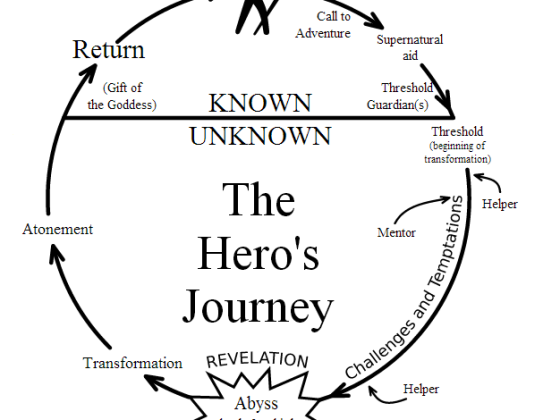“What each must seek in this life never was on land or sea. It is something out of his own unique potentiality for experience, something that never has been and never could have been experienced by someone else.”
“You are the hero of your own story.”
~ Joseph Campbell
The hero’s journey is an ancient storytelling pattern discovered and popularized by the the great mythologist and scholar Joseph Campbell. While studying the mythologies of cultures throughout history Campbell realized that many similar themes, archetypes and patterns arise throughout the ages, creating a cyclical architecture of story that has been utilized by teachers and storytellers for millennia.
